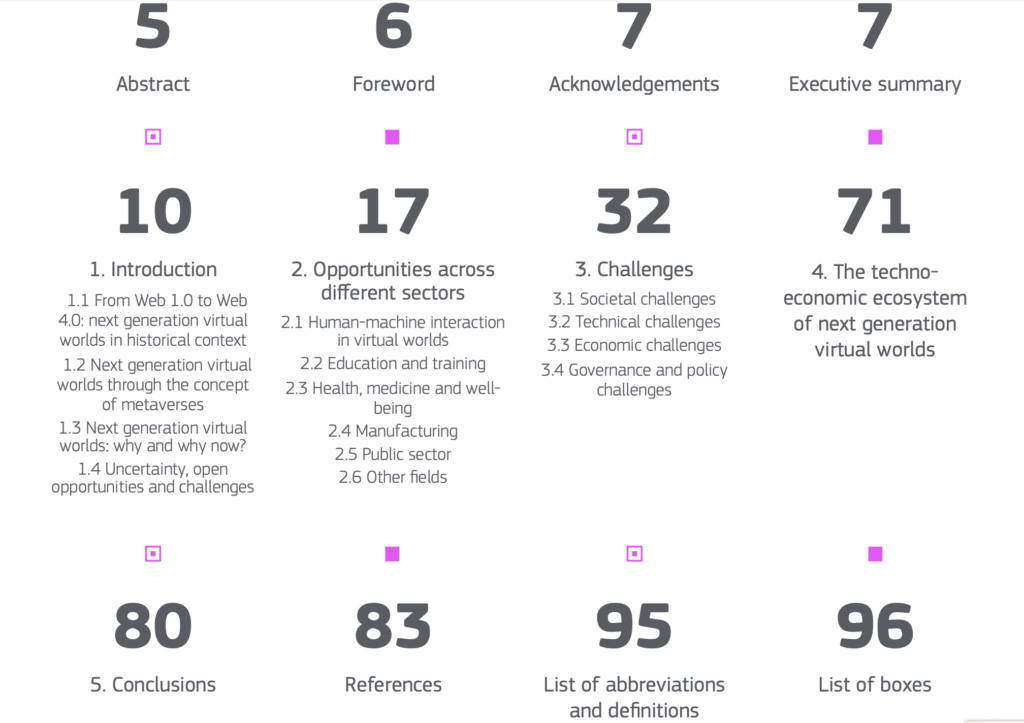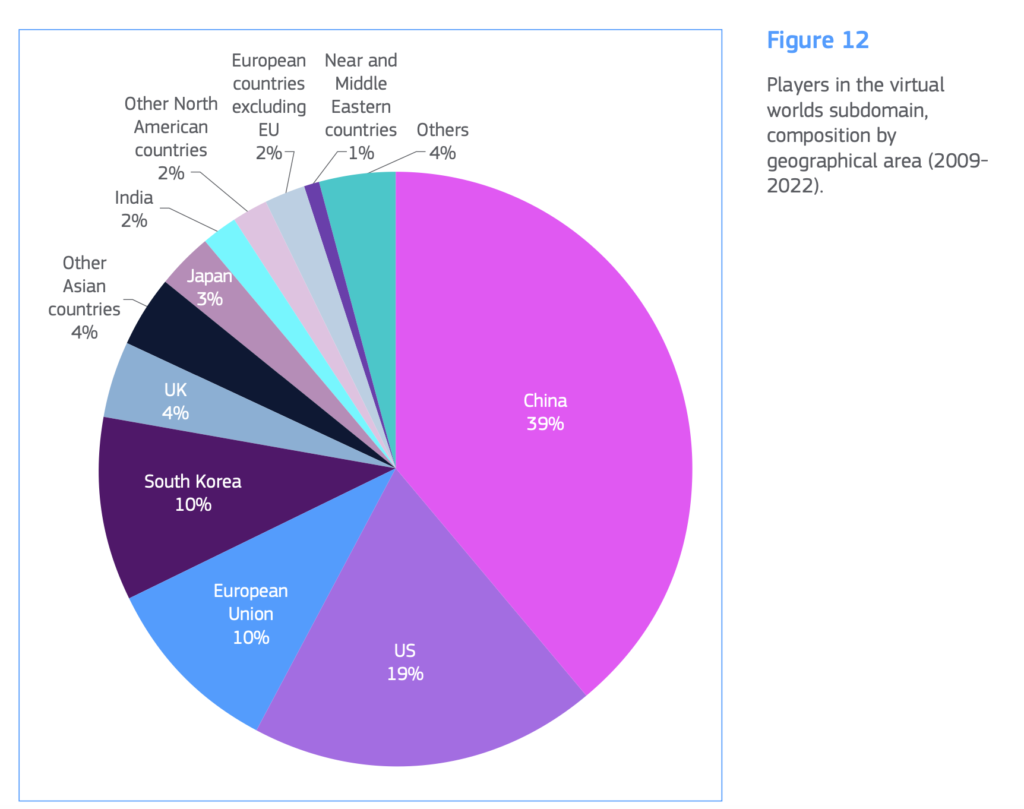Stanford study: Misinformation in Virtual Reality
Authors James G. Brown, Jeremy N. Bailenson, Jeffrey Hancock
Abstract. Virtual Reality (VR) use is growing, with approximately 20 million headsets sold in the US between 2021 and 2023. At the same time, the medium is becoming more immersive, creating perceptual experiences that come closer to the fidelity of reality with each new technological iteration. Misinformation, a long-time societal issue, has been exacerbated by the rise of the internet and social media platforms. Some of those same social media companies are also primarily driving VR: ninety percent of all VR headsets were sold by either Meta or ByteDance in 2022. It is reasonable to assume that VR will amplify misinformation since by definition the medium is designed to experientially simulate “reality”. However, there is little empirical or conceptual research in this area. The current paper reviews research on VR and misinformation and proposes an affordance-based framework for examining how VR features may foster false beliefs. We categorize VR features into two categories, immersive features (e.g., stereoscopic vision, head tracking, etc.) and content features (e.g., self- embodiment, consistency, and persistence), and for each, we review previous research on its relationship with influencing beliefs and provide informed predictions as to if and how that feature will contribute to the effectiveness of misinformation. We argue that VR can produce “mis- experiences” and will require new mitigation strategies in the Trust and Security space.
...with recent technological advances in virtual reality and generative artificial intelligence, there is a growing concern about the need to address these technologies in the context of misinformation given the potential they have to exacerbate the problem. Yet to date, there has been little research on the topic, let alone guidelines for trust and safety stakeholders. ...
... “Real-time misinformation spread in VR is enhanced by an arsenal consisting of nonverbal cues, spatial audio, haptic touch, social conformity, and other affordances that all enable a more persuasive user-to-user message, as opposed to simple text, video, or images alone. …the ephemeral (at the individual level) and multimodal nature of the medium presents identification and observation challenges that current automated trust and safety mitigation techniques may struggle with.” ...
See the full paper here: https://stanfordvr.com/mm/2023/03/Misinformation-in-Virtual-Reality.pdf
Will.i.am hails AI technology as ‘new renaissance’ in music
He added that people “desire” songs which can be a “social commentary” on the news, something AI is “going to be able to do”.
“It’s a very, very, very unique world that we’re entering into. It’s a new renaissance.”
He said new technology does not just “mimic” what he does but creates something new.
“It was a brand new song and it wrote it the way I would have written it.” ...
“The fact that AI mimics, but at the same time we haven’t put in clauses for where people own their likeness in their essence… well, that’s one thing. AI’s not deciding that, people are.” ...
See the full story here: https://uk.news.yahoo.com/am-hails-ai-technology-renaissance-092001942.html
In-Flight Entertainment Advances Provide Boost to Airlines
... American Airlines goes a bit further. The company offers the use of an Apple Music subscription to stream inflight without the purchase of Wi-Fi. Passengers without a subscription can also obtain a two-month free trial that can be accessed inflight. ...
Showcasing More Than Movies and Music
Although movies, music and TV shows may be the most popular forms of in-flight entertainment, carriers such as Hawaiian Airlines also believe they can appeal to travelers by providing them with educational content. Hawaiian started running a landing video in 2021 on all inbound transpacific flights that features tips from its employees about traveling in the Aloha State. ...
“(And) as travel to Hawaii began to rebound following the relaxation of Covid-related travel restrictions, we decided it was a good time to double-down on content about how to best protect Hawaii’s increasingly fragile ecosystems, care for the community and prioritize safety while at beaches, hiking, etc.”
Likewise, American Airlines’ educational offerings feature programs run by language learning software Rosetta Stone and online learning program Skillshare. ...
See the full story here: https://skift.com/2023/07/04/in-flight-entertainment-advances-provide-boost-to-airlines/
Virtual reality and a ‘snail fossil’ meet in clash of old and new at Royal Society
... Some of the advances showcased in 1923 remain remarkable, including a high-speed camera that could take 5,000 frames per second. The device, for which schematics from its US patent will be on show in the new display, was demonstrated by Walter Heape and his assistant, Horace Bere Grylls. ...
Not every advance has stood the test of time. One exhibit in 1923, which was 2 metres tall, was presented by Arthur Smith Woodward – the palaeontologist who proposed that the remains that became known as the Piltdown Man were from a 500,000-year-old human ancestor (they were later found to be fake).
The huge, spiral object he put forward – images of which are in the new display – was described as being a model of the fossil of the world’s largest snail – the original having been found in pieces in Sussex. It wasn’t long, however, before the theory bit the dust. ...
Other contemporary research on show includes robotic tools to help surgeons carry out operations on minute structures within the body, and virtual reality games to help young people with cochlear implants in both ears determine the direction of a sound source. ...
See the full story here: https://www.theguardian.com/science/2023/jul/04/virtual-reality-and-snail-fossil-old-and-new-royal-society
UN council to hold first meeting on potential threats of artificial intelligence to global peace
The U.N. Security Council will hold a first-ever meeting on the potential threats of artificial intelligence to international peace and security, organized by the United Kingdom which sees tremendous potential but also major risks about AI’s possible use for example in autonomous weapons or in control of nuclear weapons.
UK Ambassador Barbara Woodward on Monday announced the July 18 meeting as the centerpiece of its presidency of the council this month. It will include briefings by international AI experts and Secretary-General Antonio Guterres, who last month called the alarm bells over the most advanced form of AI “deafening,” and loudest from its developers. ...
“It could potentially help us close the gap between developing countries and developed countries,” she added.
But the risk side raises serious security question that must also be addressed, Woodward said. ...
Britain’s Prime Minister Rishi Sunak has announced that the UK will host a summit on AI later this year, “where we'll be able to have a truly global multilateral discussion," Woodward said.
See the full story here: https://abcnews.go.com/Technology/wireStory/council-hold-meeting-potential-threats-artificial-intelligence-global-100637407

Next generation virtual worlds: opportunities, challenges, and policy implications
New virtual environments are expected to bring transformative shifts in technology, society, and the economy. However, their future is dependent on key technological drivers, industry stakeholders, and adopters. ...
See the story here: https://joint-research-centre.ec.europa.eu/jrc-news-and-updates/next-generation-virtual-worlds-opportunities-challenges-and-policy-implications-2023-07-03_en
Download the E.U. report here: https://publications.jrc.ec.europa.eu/repository/handle/JRC133757

DIGITAL RIGHTS AND PRINCIPLES FOR THE DIGITAL DECADE
Putting people at the centre of the digital transformation: Digital technologies should protect people’s rights, support democracy, and ensure that all digital players act responsibly and safely. The EU promotes these values across the world.
Solidarity and inclusion: Technology should unite, not divide, people. Everyone should have access to the internet, to digital skills, to digital public services and to fair working conditions.
Freedom of choice: People should benefit from a fair online environment, be safe from illegal and harmful content, and be empowered when they interact with new and evolving technologies like artificial intelligence.
Participation in the digital public space: Citizens should be able to engage in the democratic process at all levels and have control over their own data.
Safety, security and empowerment: The digital environment should be safe and secure. All users, from childhood to old age, should be empowered and protected.
Sustainablity: Digital devices should support sustainability and the green transition. People need to know about the environmental impact and energy consumption of their devices.x 1


How XR projects are blurring reality and moving beyond VR headsets
...
One of the projects from Quebec on display is Composition, a piece directed by creator Vincent Morisset in which users simultaneously “compose” a piece of music and an art piece in real time by moving wooden blocks across a table. The position of the blocks determines when and where musical notes and visuals appear. Significantly, Composition is one of the few pieces that does not feature the use of a VR headset. ...
For the first time since 2019, Beyond Reality is being held in at Bucheon Art Bunker B39, an art venue housed in a former waste incineration facility that features a 39-meter-high cavernous storehouse. One piece that makes use of this unique space is Gaudi: The Atelier Of The Divine, in which users don VR headsets and explore Gaudi’s atelier and the Sagrada Família. Meanwhile, those present can look on as Gaudi’s pieces are projected onto the bunker’s massive concrete wall. ...
Meanwhile, a piece titled Forager puts users in the shoes of a mushroom growing out of the soil and features not just 3D images, but a vibrating chair to simulate the sense of touch and even smells emitted from a special box.
A new part of Kim’s work with Beyond Reality is an alliance with XR exhibitors throughout Asia that aims to support creators and get their work seen in Europe and the US. Year one will involve licensing IP from Japan for XR projects. ...
See the full story here: https://www.screendaily.com/features/how-xr-projects-are-blurring-reality-and-moving-beyond-vr-headsets/5183681.article

A.I. Is Coming for Mathematics, Too
...
Akshay Venkatesh, a mathematician at the Institute for Advanced Study in Princeton and a winner of the Fields Medal in 2018, isn’t currently interested in using A.I., but he is keen on talking about it.“I want my students to realize that the field they’re in is going to change a lot,” he said in an interview last year. He recently added by email: “I am not opposed to thoughtful and deliberate use of technology to support our human understanding. But I strongly believe that mindfulness about the way we use it is essential.”
In February, Dr. Avigad attended a workshop about “machine-assisted proofs” at the Institute for Pure and Applied Mathematics, on the campus of the University of California, Los Angeles. (He visited the Euclid portrait on the final day of the workshop.) The gathering drew an atypical mix of mathematicians and computer scientists. “It feels consequential,” said Terence Tao, a mathematician at the university, winner of a Fields Medal in 2006 and the workshop’s lead organizer. ...
One conspicuous workshop attendee sat in the front row: a trapezoidal box named “raise-hand robot” that emitted a mechanical murmur and lifted its hand whenever an online participant had a question. “It helps if robots are cute and nonthreatening,” Dr. Tao said. ...
Early during Dr. Williamson’s DeepMind collaboration, the team found a simple neural net that predicted “a quantity in mathematics that I cared deeply about,” he said in an interview, and it did so “ridiculously accurately.” Dr. Williamson tried hard to understand why — that would be the makings of a theorem — but could not. Neither could anybody at DeepMind. Like the ancient geometer Euclid, the neural net had somehow intuitively discerned a mathematical truth, but the logical “why” of it was far from obvious.
At the Los Angeles workshop, a prominent theme was how to combine the intuitive and the logical. If A.I. could do both at the same time, all bets would be off.
But, Dr. Williamson observed, there is scant motivation to understand the black box that machine learning presents. “It’s the hackiness culture in tech, where if it works most of the time, that’s great,” he said — but that scenario leaves mathematicians dissatisfied.
He added that trying to understand what goes on inside a neural net raises “fascinating mathematical questions,” and that finding answers presents an opportunity for mathematicians “to contribute meaningfully to the world.”
See the full article here; https://www.nytimes.com/2023/07/02/science/ai-mathematics-machine-learning.html
What is AI Hyperpersonalization? Advantages, Case Studies, & Ethical Concerns
...
What Is AI Hyperpersonalization?
AI hyperpersonalization or AI-powered hyperpersonalization is an advanced form of personalized marketing strategy that uses real-time data and individual journey maps along with AI, big data analytics, and automation to deliver highly contextualized and tailored content, products, or services to the right users at the right time through the right channels.
The Mechanics of AI Hyperpersonalization
Hyperpersonalization using AI starts from data collection and ends in highly tailored user experiences. Let’s get a brief overview of the relevant steps.
1. Data Collection
2. Data Analysis
3. Prediction & Recommendation
...
Case Study 2: Entertainment Industry (Netflix)
Netflix has revolutionized the entertainment industry through its use of hyperpersonalization. Former VP of product innovation at Netflix has stated in an interview that:
“If one member in this tiny island expresses an interest for anime, then we're able to map that person to the global anime community. We know which are the best movies and TV shows for people in the world in that community.”
Reportedly, personalized recommendations save Netflix more than $1 billion every year. The company uses AI to analyze a vast array of customer data points, including:
- Viewing history
- Ratings given to different shows or movies
- Time of day when a user watches certain content
By analyzing vast amounts of highly contextualized data, Netflix suggests hyperpersonalized content according to the user’s preference. As a result, 80% of the content hours watched on Netflix come from the recommendation system, while 20% comes from searches.
...
Concerns & Ethical Implications of AI Hyperpersonalization
Privacy Issues ...
Consumer Manipulation ...
See the full story here: https://www.unite.ai/what-is-ai-hyperpersonalization-advantages-case-studies-ethical-concerns/
Sensorium Galaxy Unveils Mona Lisa: Metaverse Renaissance As Latest Pionering Streaming Experience
Sensorium Galaxy, the leading entertainment metaverse, today announced the release of the third episode of its metaverse streaming series, titled Mona Lisa: Metaverse Renaissance.
As part of this latest format, Mona Lisa is being replicated as an AI-driven avatar inside Sensorium's metaverse where she will be performing groundbreaking electronic music DJ sets.
See the full story here: https://www.prnewswire.com/news-releases/sensorium-galaxy-unveils-mona-lisa-metaverse-renaissance-as-latest-pionering-streaming-experience-301867061.html
Pages
- About Philip Lelyveld
- Mark and Addie Lelyveld Biographies
- Presentations and articles
- Tufts Alumni Bio